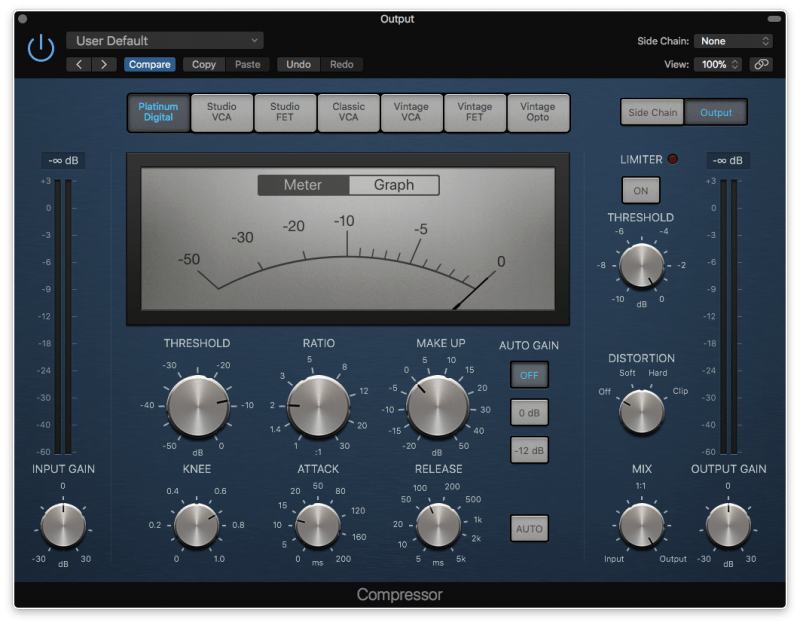
Attack – This refers to 1) the very beginning of a sound, and 2) the amount of time it takes after a sound begins for a sound processor to begin working. Usually measured in milliseconds (ms).
Compression – Reducing a signal’s output volume in relation to its input volume to reduce its dynamic range. Basically, when a sound gets louder than a certain level, a compressor turns the sound down somewhat. This controls the dynamics of that sound to make it more consistent.
De-esser – A processor that turns down sibilance (the sound of an “s”) when it happens in a vocal track.
Knee – A control on a compressor that changes how variable the severity of compression is once the threshold has been passed. A “soft” knee makes the compression less obvious, whereas a “hard” knee makes the compressor more obvious.
Limiter – A compressor with a ratio of ∞:1, otherwise known as a “brick wall.” This means that when a sound reaches the threshold of a limiter, it doesn’t get any louder – it stays the exact same volume. This is used to prevent a track from peaking while at the same time increasing its perceived loudness.
Makeup gain – A parameter that allows you to increase the output volume of a sound processor that made the input sound quieter. For example, a compressor makes sounds softer, so makeup gain is needed to keep the sound at the same volume that it previously was.
Noise gate – A sound processor that cuts off the volume of a sound once it passes below a certain volume threshold.
Ratio – A parameter of a compressor that determines how hard the compressor clamps down on the volume of the audio. If a ratio is set to 2:1, then for every 2dB’s of audio that goes above the threshold, 1dB comes out. If the ratio is set to 4:1, then for every 4dB’s of audio that goes above the threshold, 1dB comes out. And so on.
Release – How long it takes a sound processor to cease processing the sound. Usually measured in milliseconds (ms). For example, if the release of a compressor is set to 100ms, then the compressor will stop processing the sound 100ms after it has been activated.
Sibilance – The sound of an “s” in a word. For example, sit, stay, masks, etc. Usually problematic in vocal recording, as microphones pick up the sibilance sounds more than the rest of the frequency spectrum. One of the most popular ways to fix sibilance is a de-esser.
Threshold – A parameter of a sound processor that tells the processor to not kick in until the volume of an incoming sound exceeds the set volume limit. For example, a compressor does not start to turn down audio until the instrument gets louder than the threshold set by the user.
Transient – The very beginning section of a sound. Also known as the sound’s attack. It’s the loudest and most percussive part of the sound.
